A Guide to Incorporating Plants In Design
Discover the art of eco-friendly planting design for interiors and learn how to transform your designs.
Imagine walking into a room filled with lush greenery, where every corner breathes life, and the air feels fresher. This isn’t just a dream for nature enthusiasts but a growing design trend that marries the beauty of the outdoors with our indoor spaces.
Our homes, offices, and public spaces are transforming, and this blog aims to guide you through the exciting journey of blending nature seamlessly with design.
Let’s explore how to make our spaces not only more beautiful but healthier and more productive places to be:
- Benefits Of Eco-friendly Planting Design
- How To Choose The Right Plants For Your Space
- Tips & Tricks For Designing With Plants
- Maintaining Your Indoor Greenery
- Incorporating Sustainable Practices in Planting Design
- FAQ
___________________________________________________________
Benefits of Eco-Friendly Planting Design
Creating an eco-friendly planting design for your interiors offers numerous benefits. First and foremost, plants improve air quality by absorbing carbon dioxide and releasing oxygen. This can help create a healthier indoor environment, especially in spaces with poor ventilation. Additionally, plants can act as natural air filters, removing toxins and pollutants from the air – check out the NASA Clean Air study. Studies have also shown that being around plants can reduce stress levels and improve overall well-being.
Another advantage of eco-friendly planting design is the aesthetic appeal it brings to your interiors. Plants add a touch of natural beauty, creating a calming and inviting atmosphere. They can also serve as focal points or statement pieces, adding visual interest to your space. Furthermore, following an eco-friendly path when it comes to your designs is a massive step in the right direction for brand image. The demand to be eco-conscious is ever-growing, especially in regards to being ESG-compliant, and biophilia contributes to this.
___________________________________________________________
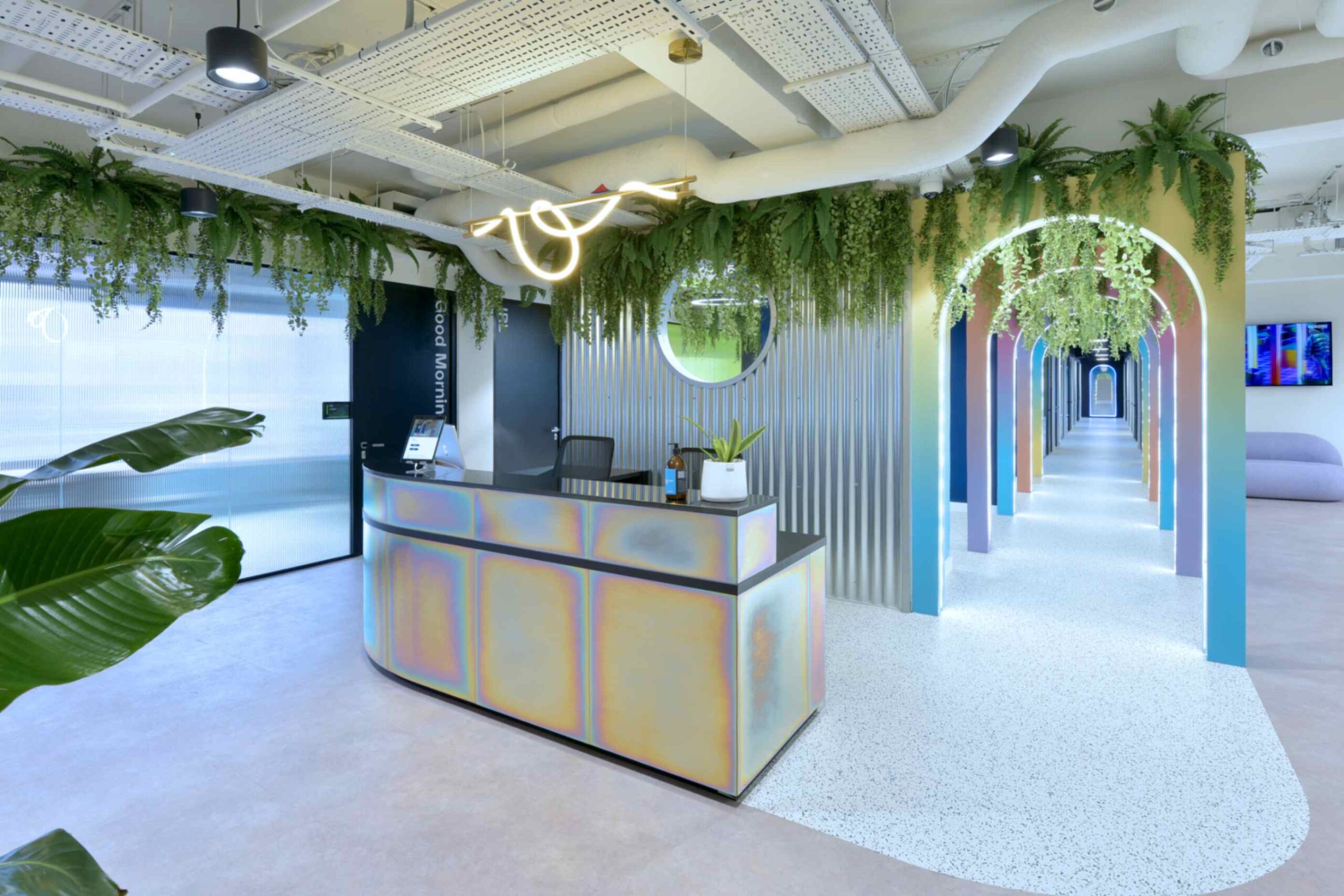
Choosing the Right Plants for Indoor Spaces
There are a few things our team of qualified designers bear in mind when it comes to choosing the plants. This is equally as important as the designs themselves. The amount of plant varieties is incredible – each with their own look and feel so getting them right is the first step.
When selecting plants for indoor spaces, it is important to consider their specific needs and requirements. Some plants thrive in low-light conditions, making them suitable for rooms with limited natural sunlight. Others require bright, indirect light and should be placed near windows or in well-lit areas. It is also crucial to choose plants that are compatible with the indoor environment, such as those that can tolerate dry air or fluctuating temperatures.
Why is this important? Well, your designs won’t be looking that great in a few weeks let me tell you that much! There’s more too it than looks, which is why our maintenance schemes are something most of clients go for. Some clients have now been with us for over 40 years, with ongoing maintenance, and complete redesigns.
In addition to light and environmental conditions, it is essential to consider the size and growth habits of the plants. For smaller spaces, compact and trailing plants can be a great choice, while larger rooms can accommodate taller and more expansive varieties. It is also worth considering the maintenance requirements of the plants, as some may require more care and attention than others.
Lastly, it is recommended to select plants that are known for their air-purifying qualities. Examples include snake plants, pothos, and peace lilies, which can help improve the air quality in your interiors.
___________________________________________________________
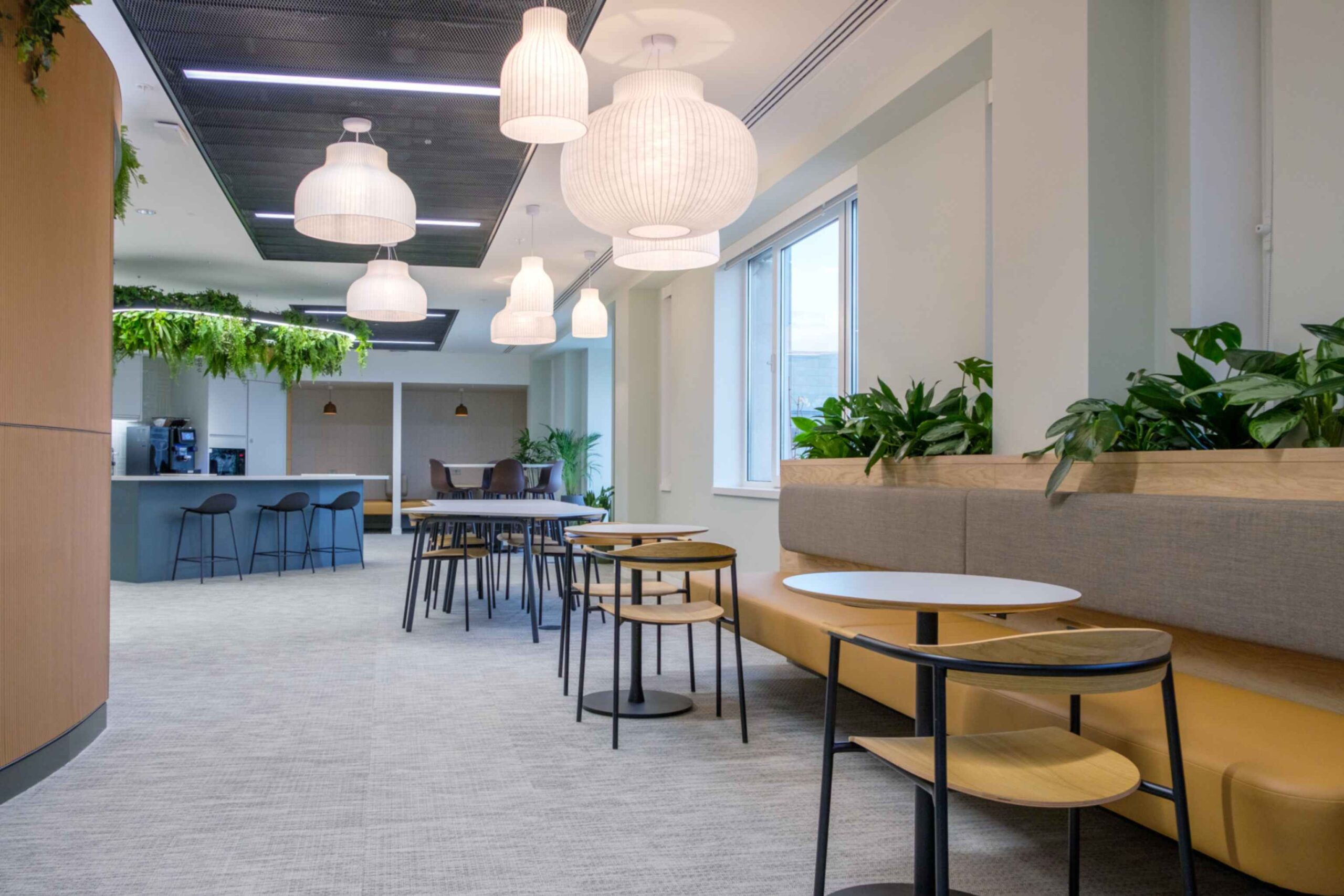
Designing with Plants: Tips and Tricks
- Understanding the Purpose
- Site Analysis
- Functional Integration
- Aesthetic Integration
- Spatial Planning
- Seasonal Variation
- Maintenance Requirements
- Ecological Considerations
- Sustainability
- Collaboration with Horticultural Experts
- Education and Engagement
- Adaptability
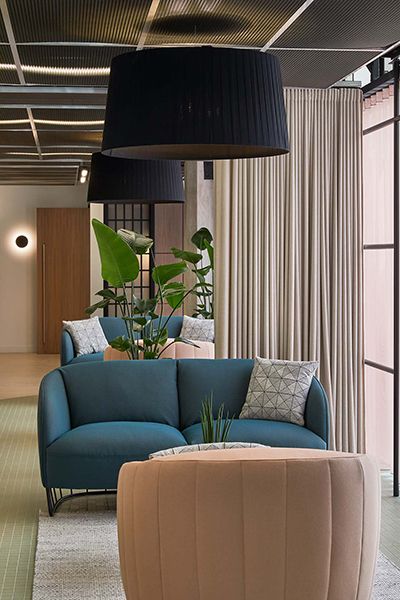 Understanding the Purpose:
Understanding the Purpose:
Before integrating planting into any design, it’s crucial to understand the purpose behind it. Are you aiming for aesthetics, functionality, sustainability, or a combination of these? This will guide your design decisions.
Site Analysis
Conduct a thorough site analysis to understand the environmental conditions such as sunlight exposure, soil type, climate, and existing vegetation. This analysis will help you select appropriate plants that can thrive in the given conditions. This will also help you to decide the placement, and whether you need to use a higher or lower pot.
Functional Integration:
Consider how planting can serve functional purposes within your design. This could include using plants for shading, air purification, noise reduction, erosion control, or providing habitat for wildlife.
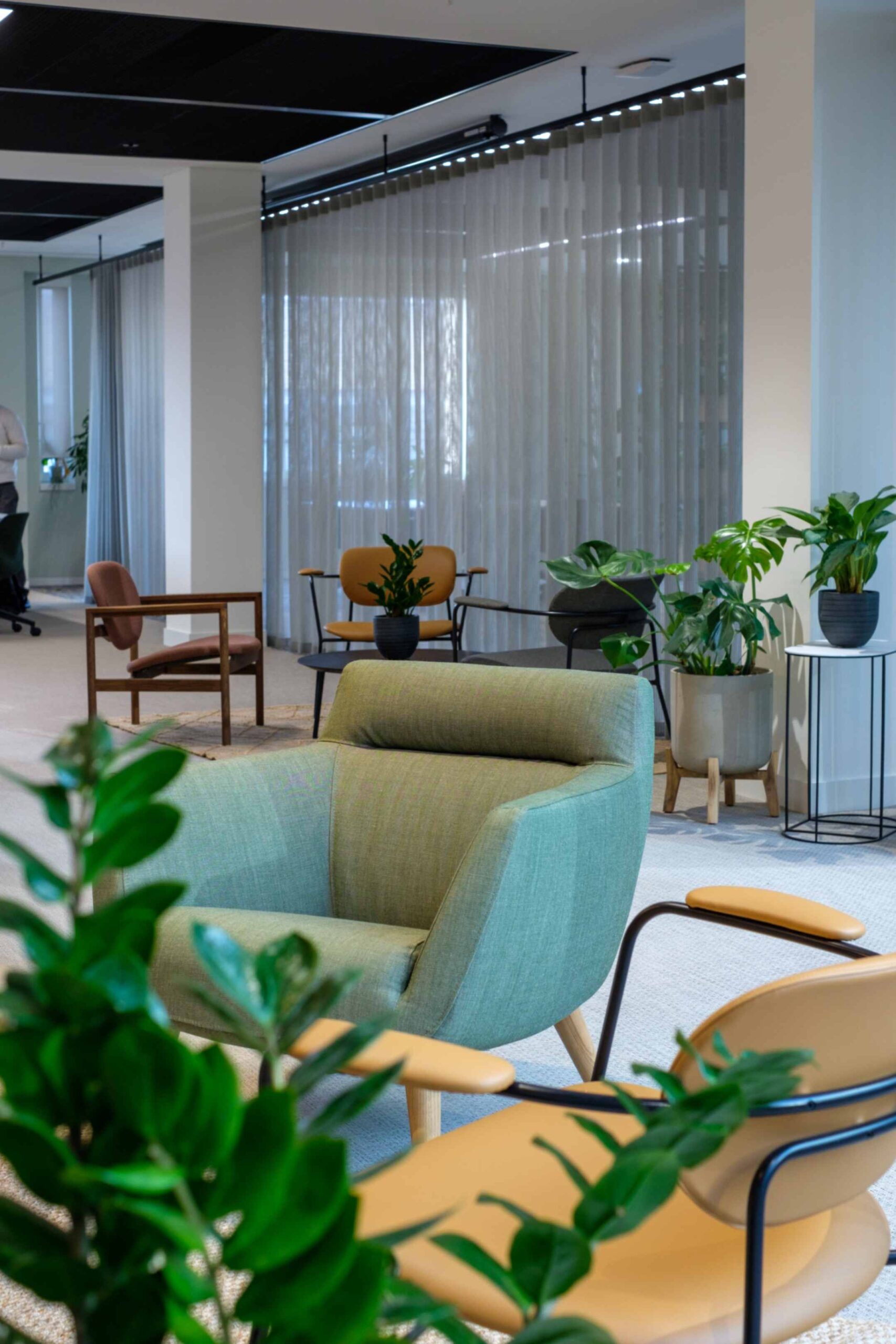 Aesthetic Integration:
Aesthetic Integration:
Plants can add beauty, texture, and colour to a design. Consider how different plant species can complement the overall aesthetic of the space, whether you’re designing a garden, a public park, or an interior space.
Spatial Planning:
Integrate planting into your design by carefully planning the spatial arrangement of plants. Consider factors such as plant height, growth habits, and spacing to create visually appealing compositions that enhance the overall design.
Seasonal Variation:
Incorporate plants that offer visual interest throughout the year, considering seasonal changes in foliage, flowers, and fruit. This ensures that the design remains dynamic and engaging across different seasons.
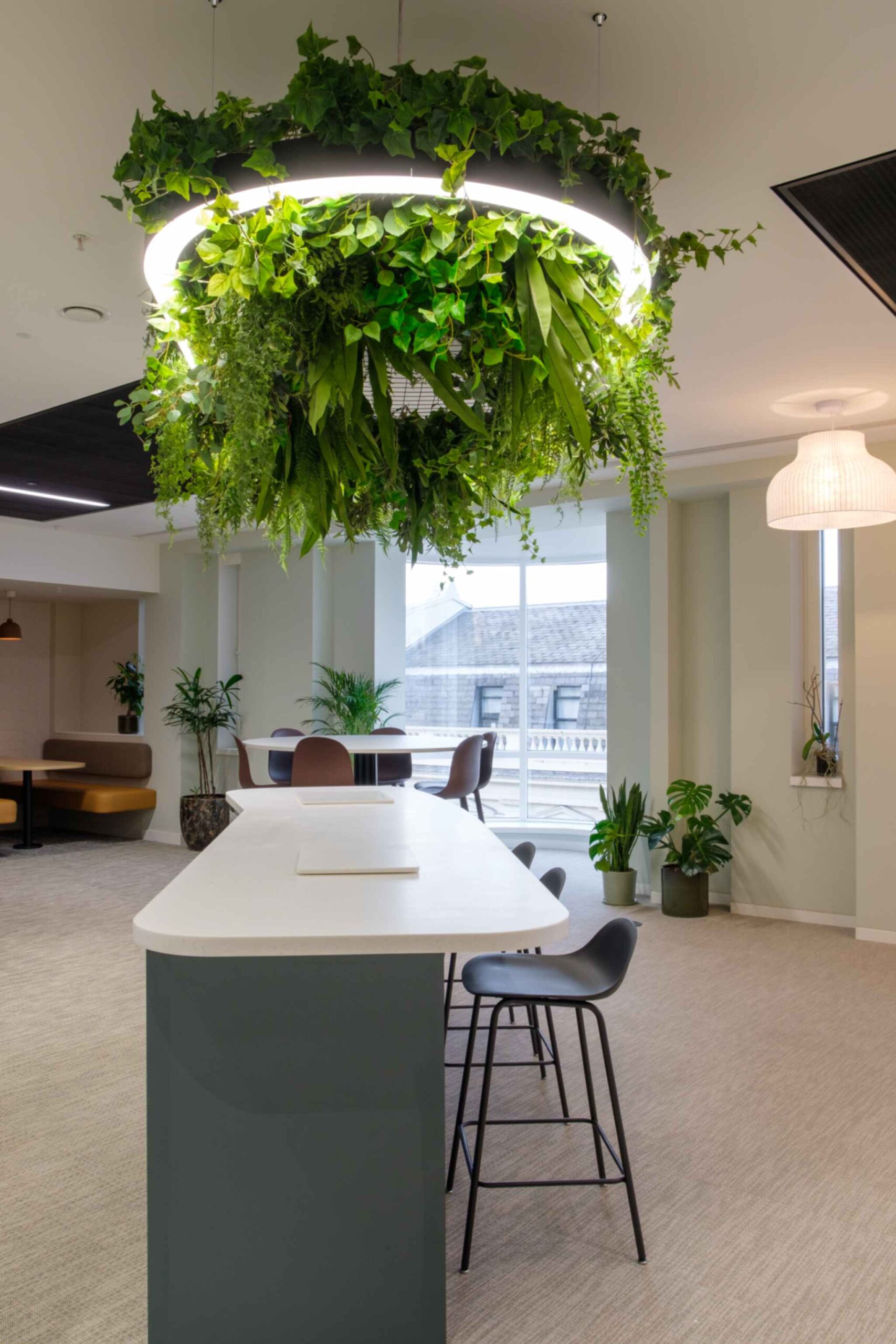 Maintenance Requirements:
Maintenance Requirements:
Design with maintenance in mind by selecting plants that are suitable for the level of care available. Low-maintenance plants can be preferable for designs where regular upkeep may be challenging. Else, use something like our maintenance scheme to take care of that for you, and choose exactly what you want!
Ecological Considerations:
Aim for biodiversity by incorporating native plant species that support local ecosystems. This can contribute to ecological resilience and promote the conservation of native flora and fauna.
Sustainability:
Integrate sustainable practices into your design by selecting drought-tolerant plants, implementing water-efficient irrigation systems, and using organic fertilisers. Sustainable planting practices can minimise environmental impact and promote long-term resilience.
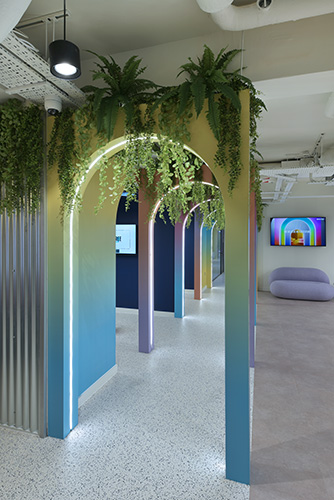 Collaboration with Horticultural Experts:
Collaboration with Horticultural Experts:
Consider collaborating with horticultural experts or landscape architects who can provide valuable insights into plant selection, maintenance practices, and ecological considerations. Our team can take your designs/floorplan and do the planting integration for you, meaning no stress!
Education and Engagement:
Educate clients and end-users about the benefits of integrated planting and encourage active engagement with the planted spaces. This can make for a deeper appreciation for nature and promote stewardship of the green spaces.
Adaptability:
Design with flexibility in mind to accommodate future changes and growth of plants. Consider how the planted elements can evolve over time and adapt to changing environmental conditions.
___________________________________________________________
Maintaining Your Indoor Greenery
Proper maintenance is key to keeping your indoor greenery thriving and healthy. Here are some essential tips to help you maintain your plants:
- Water your plants regularly, taking care not to overwater or underwater them. The frequency and amount of water needed may vary depending on the plant species, so it is important to research and understand the specific requirements of each plant.
- Monitor the humidity levels in your interiors, especially during dry seasons. Some plants may benefit from misting or placing them near a humidifier to create a more suitable environment.
- Keep an eye out for pests and diseases that can affect your plants. Regularly inspect the leaves and stems for any signs of infestation or damage. If necessary, take appropriate measures to control and treat the problem.
- Trim and prune your plants as needed to maintain their shape and promote healthy growth. Remove any dead or yellowing leaves to prevent the spread of diseases.
- Fertilize your plants occasionally with a balanced fertilizer to provide them with essential nutrients. Be sure to follow the instructions on the fertilizer packaging and avoid overfertilizing, as it can harm the plants.
By following these maintenance tips, you can ensure that your indoor greenery remains vibrant and beautiful.
___________________________________________________________
Incorporating Sustainable Practices in Planting Design
In addition to creating a visually appealing and eco-friendly planting design, it is important to incorporate sustainable practices. Here are some ways to make your planting design more sustainable:
- Use organic and locally sourced potting soil and fertilizers. This reduces the carbon footprint associated with transportation and minimizes the use of synthetic chemicals.
- Consider using recycled or upcycled containers for your plants. This not only reduces waste but also adds a unique and creative element to your design.
- Opt for native or drought-tolerant plant species. These plants are adapted to the local climate and require less water and maintenance.
- Implement a water-saving irrigation system, such as drip irrigation or a smart watering system. This helps conserve water and ensures that your plants receive the right amount of moisture.
- Compost organic waste from your plants to create nutrient-rich soil amendments. This reduces waste and provides a sustainable source of nutrients for your plants.
By incorporating these sustainable practices, you can create an eco-friendly planting design that is both aesthetically pleasing and environmentally conscious.
___________________________________________________________
Ready to make your designs sustainable?

Drop Veronique an email!
___________________________________________________________
FAQ
What Does Our Maintenance Scheme Consist Of?
Is Biophilic Design Hard?
So, why should I bother integrating plants into my interior designs?
Okay, but how do I know which plants are the right fit for indoors?
Speaking of TLC, how do I keep these leafy buddies thriving?
Is there a way to make this whole planting gig sustainable?

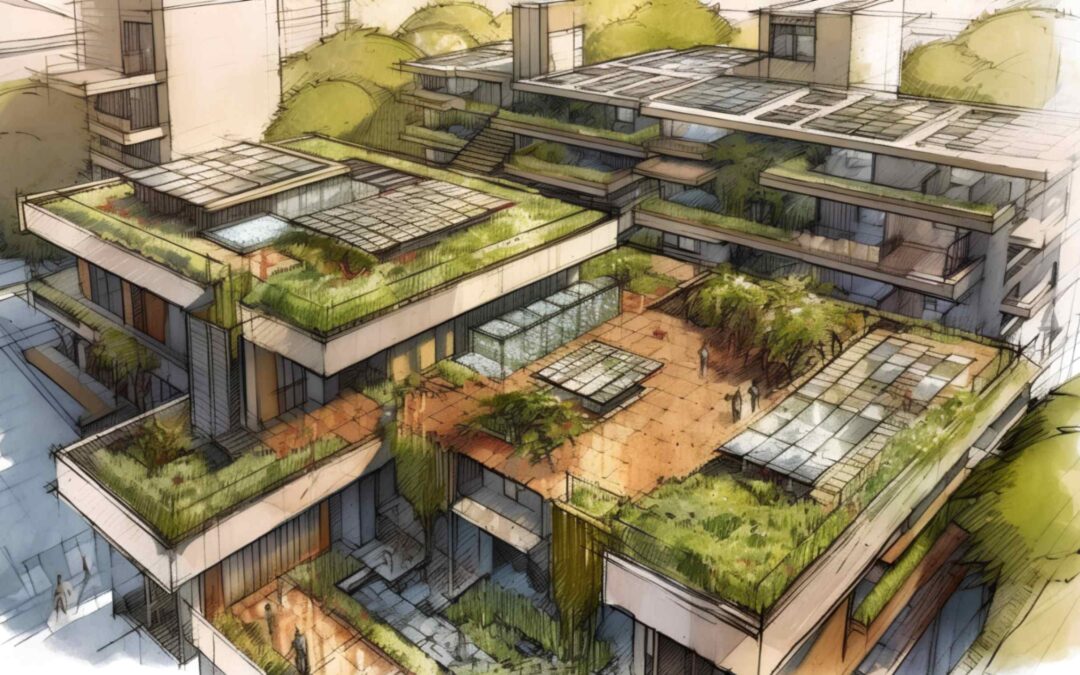
Recent Comments